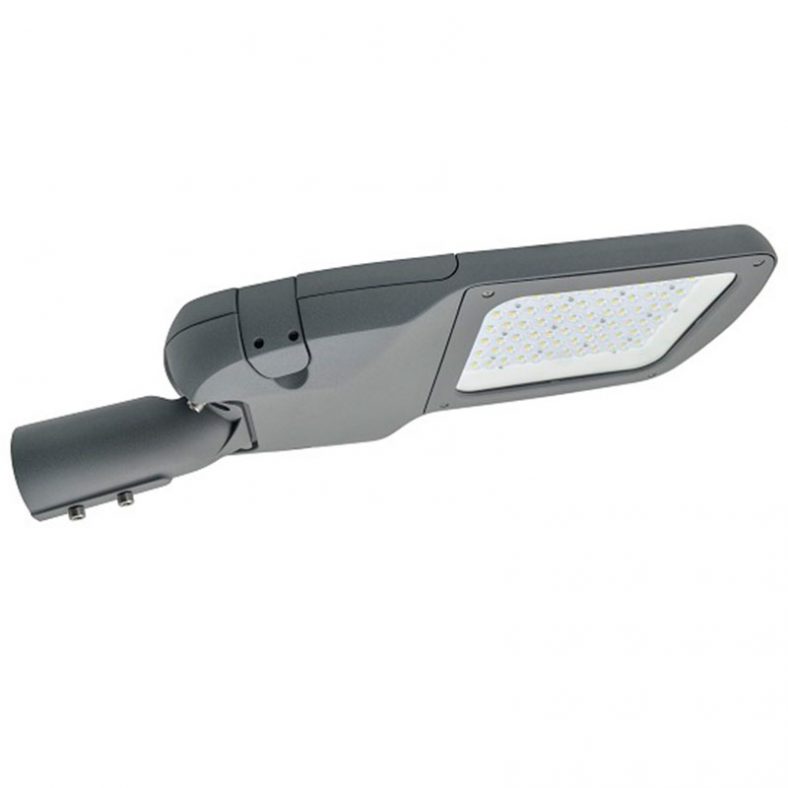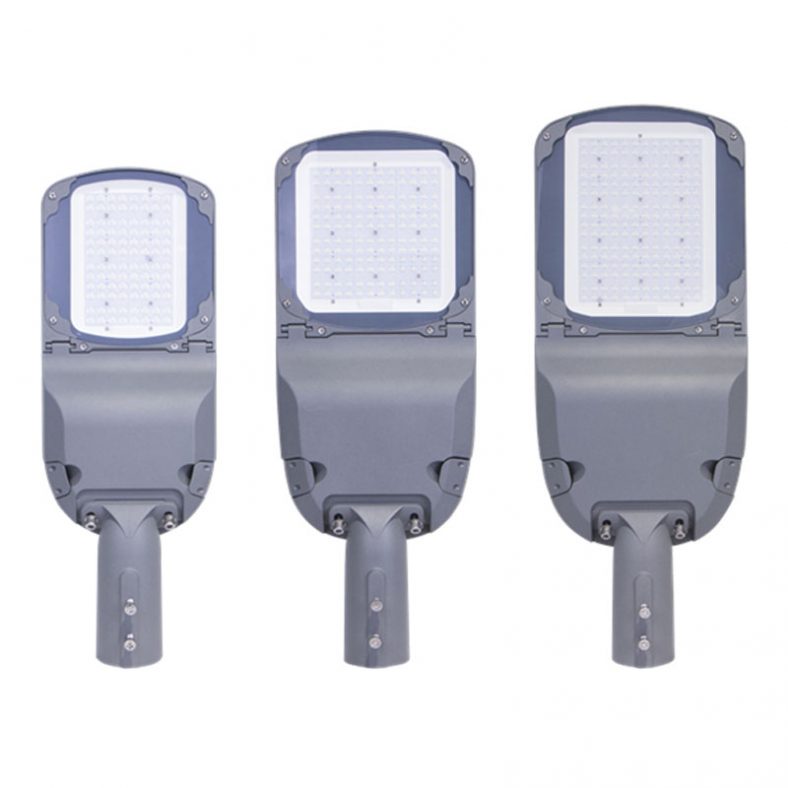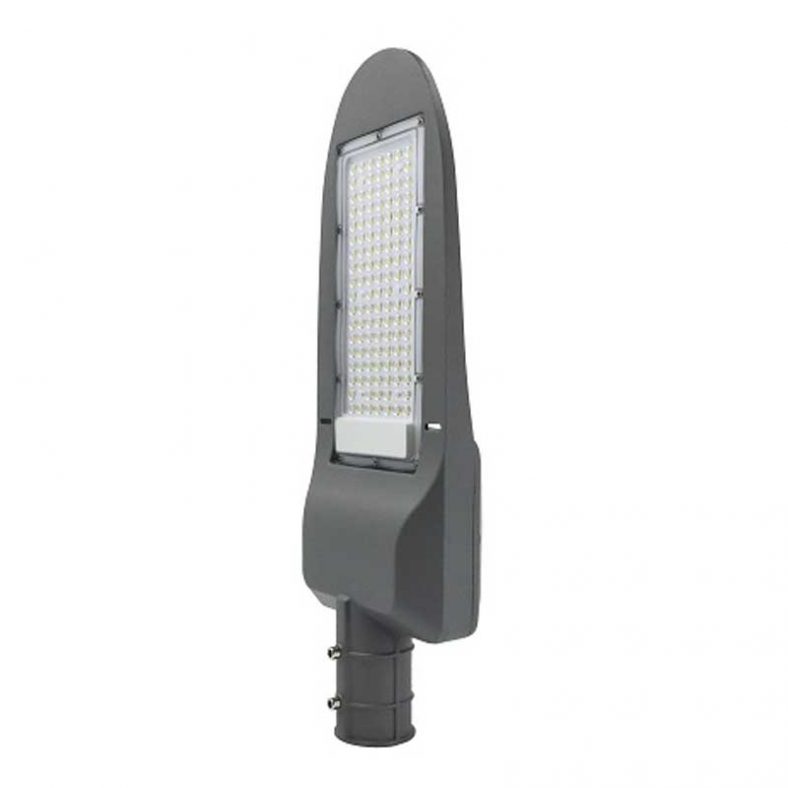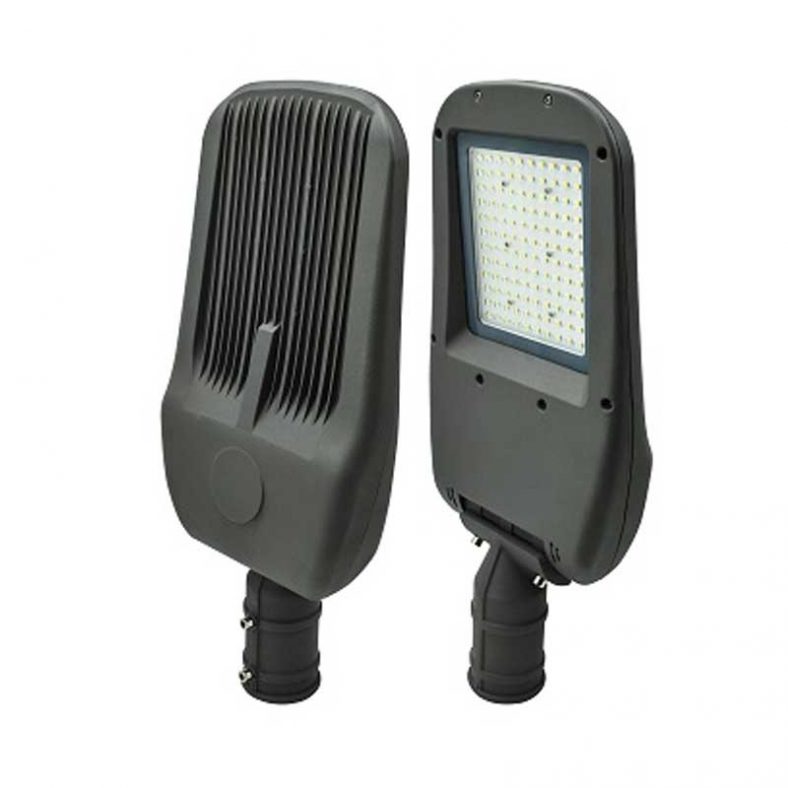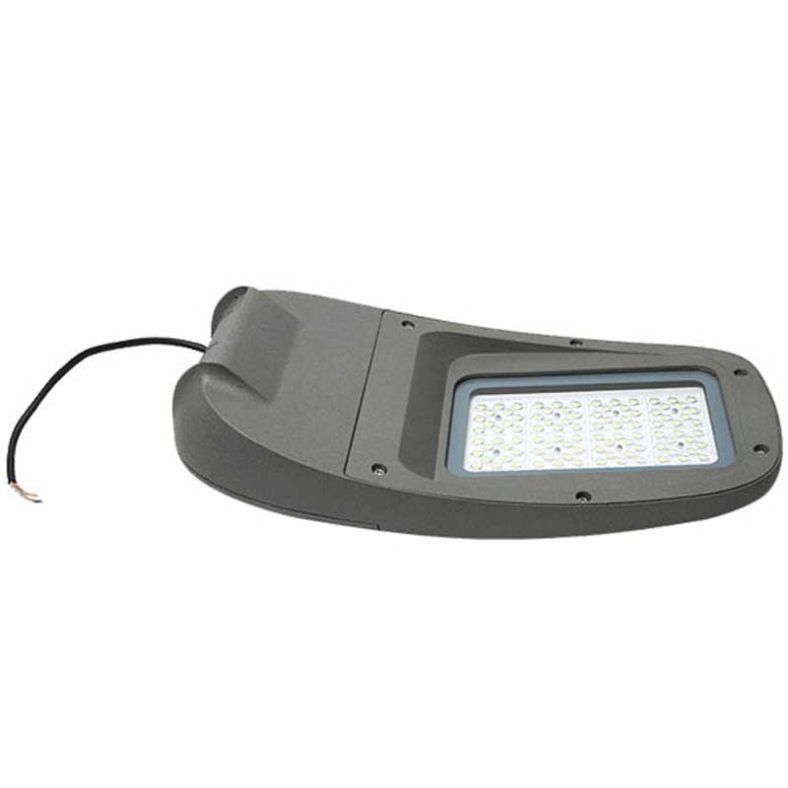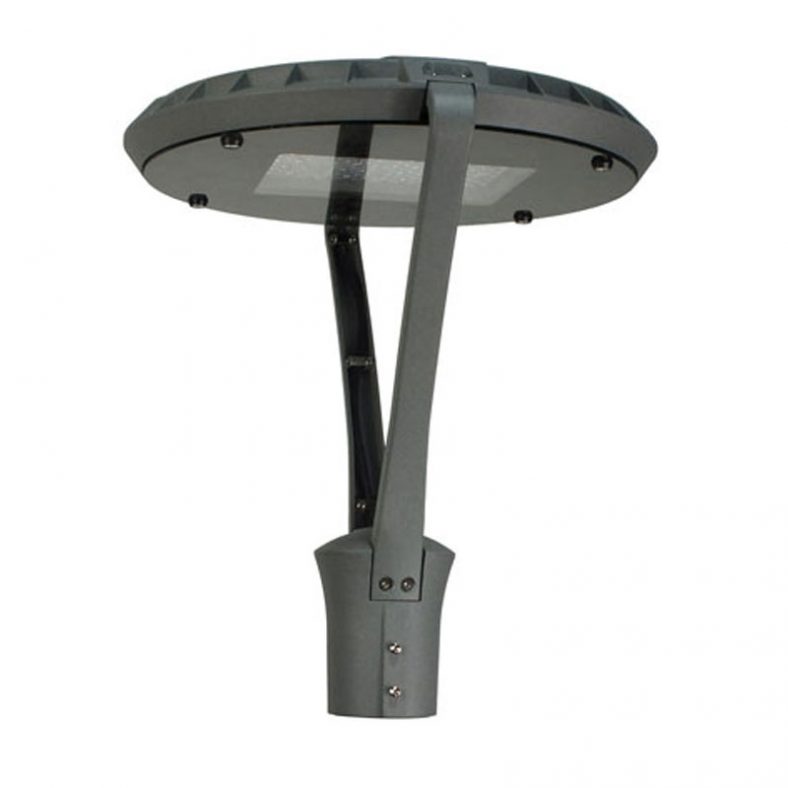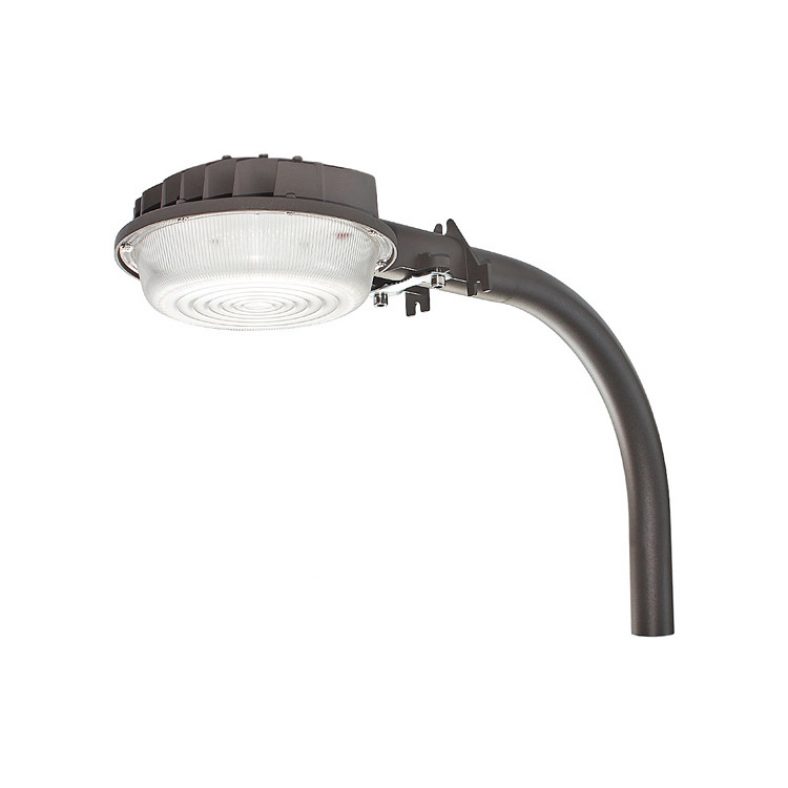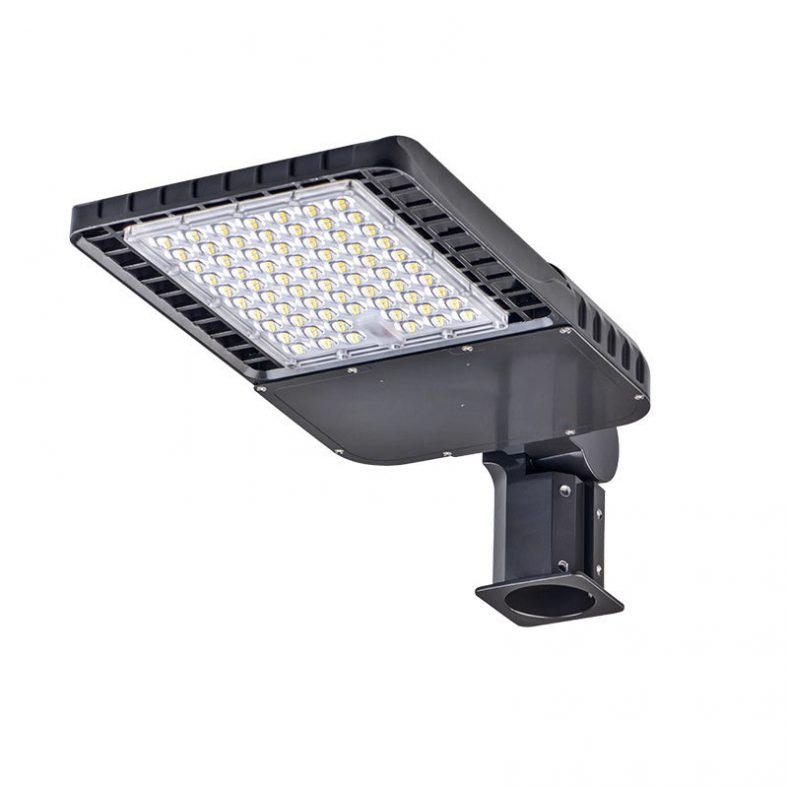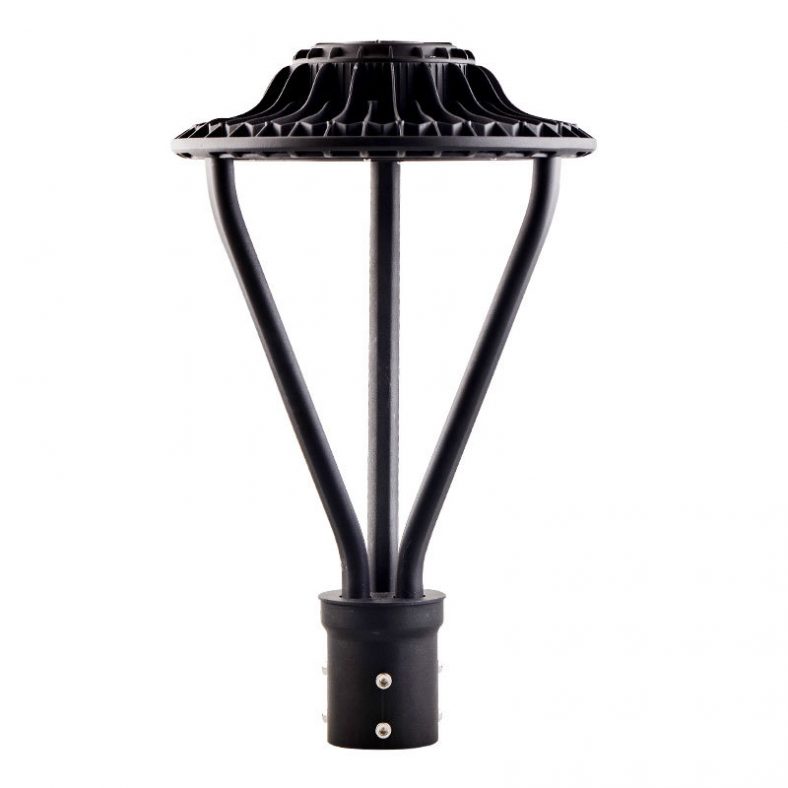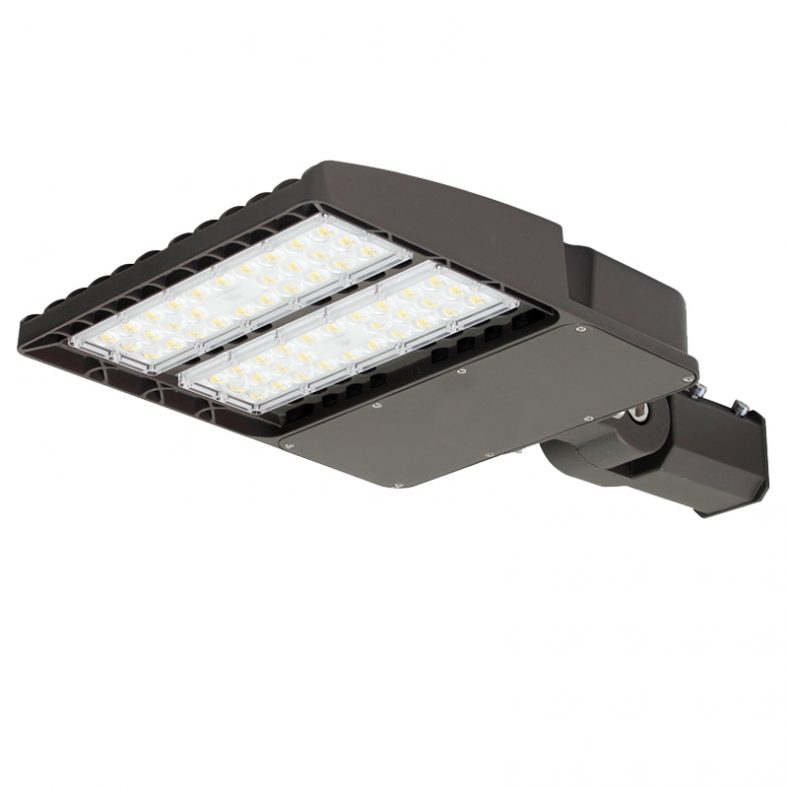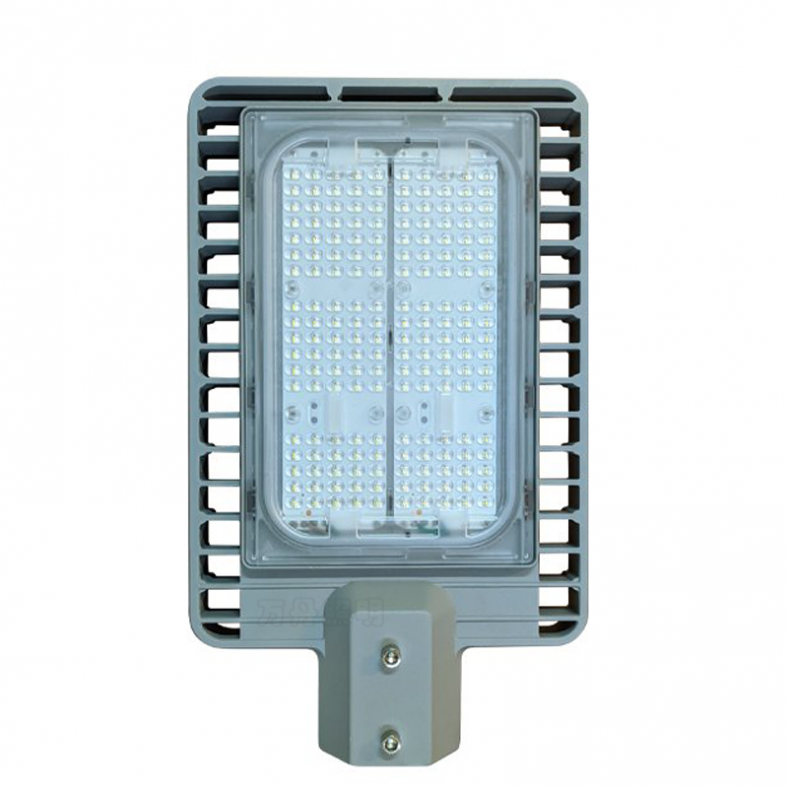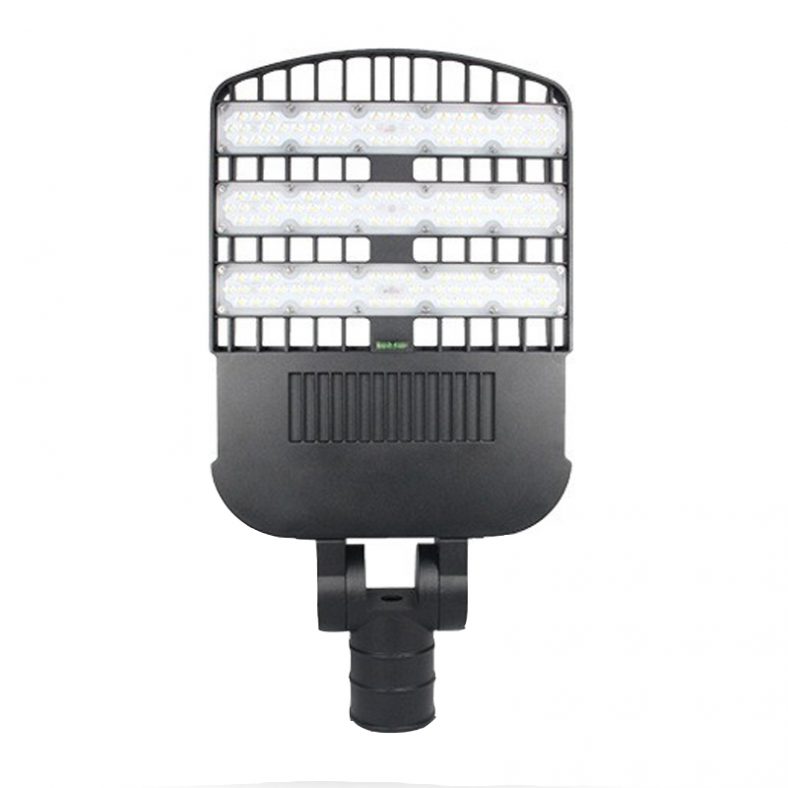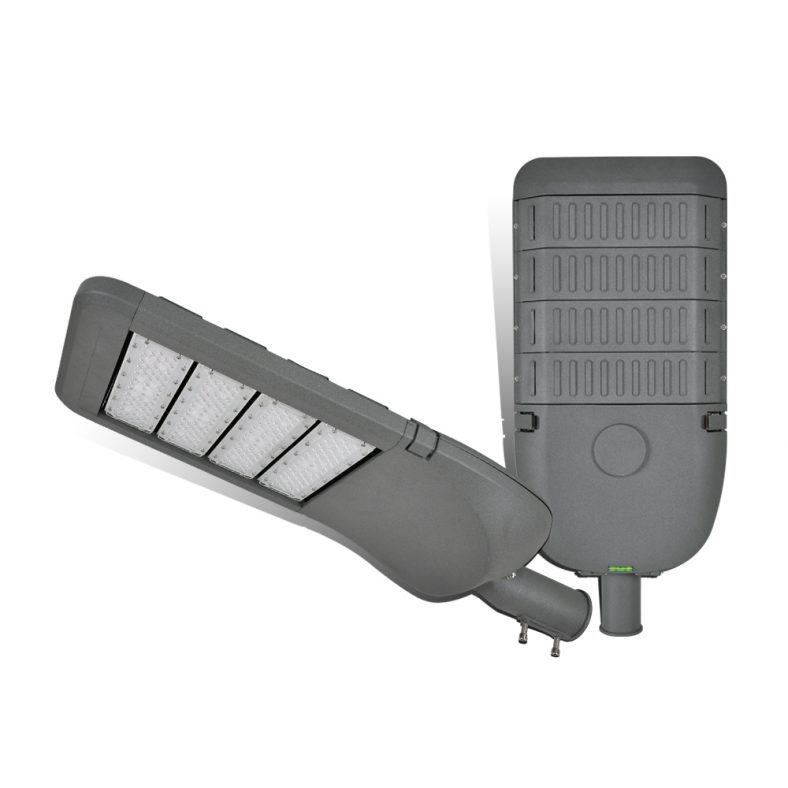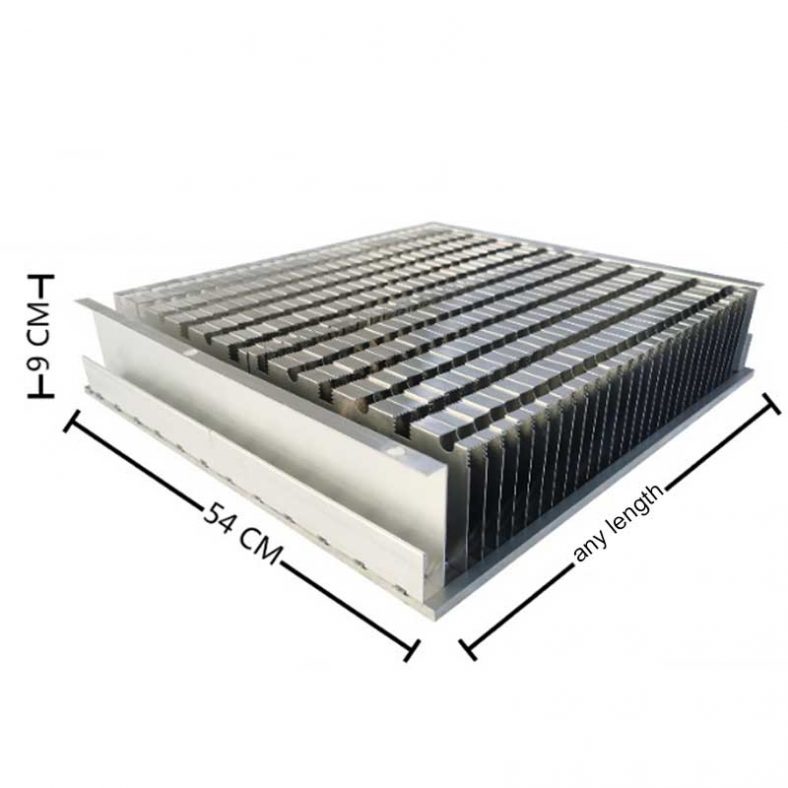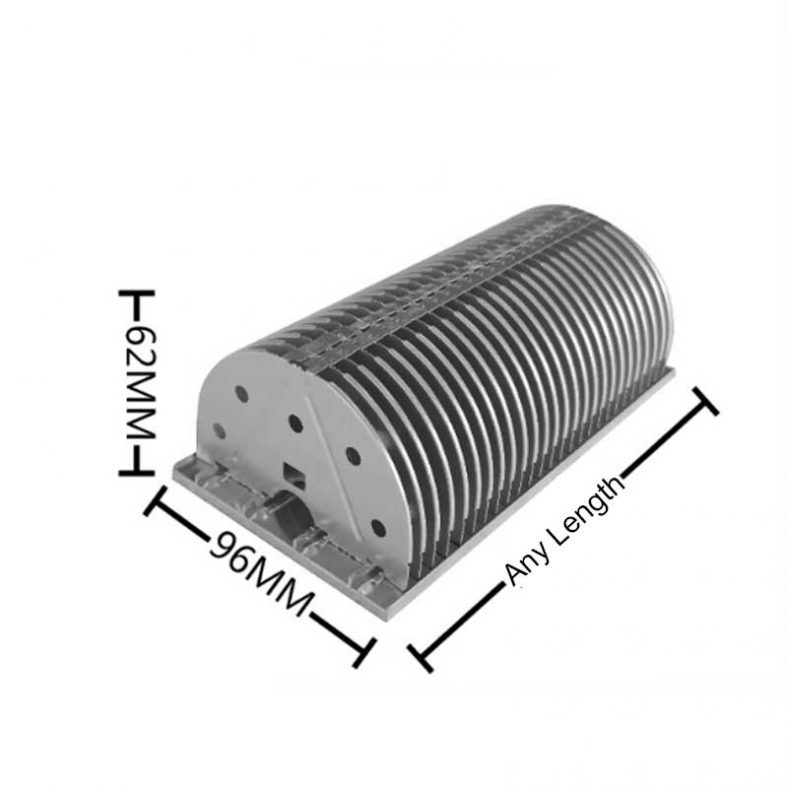
LED Street Lights Manufacturer
LED Street Lights to meet your every need.
LED street lights from Wandan Lighting-best LED street light manufacturer and supplier in China, we are absorbed in manufacturing LED street lighting over 20 years. We have rich experience to produce high quality LED street lamp. We used MEAN WELL, Philips LED driver and OSRAM, Philips, Nichia LED chips on the LED street lights. We offer 5years warranty for our street LED lighting.Through the supervision of production quality by third-party organizations, the quality of our LED street light fixture is fundamentally guaranteed. Our outdoor LED street lights have all kinds safety testing certifications, such as UL, CE, ROSH, CB, SAA, ETL, etc., which can meet the safety standards of each country. Contact us to become our LED street light wholesale and distributor, we will offer you the best LED street light lamp and smart LED street lighting system service.
LED Street Lights
Wandan Lighting specialist offers a wide variety of LED Street Lights Lights to meet your every need.
LED street lights are a type of outdoor lighting system designed to illuminate public streets, highways, and other large outdoor areas. They use light-emitting diodes (LEDs) as their primary source of light instead of traditional incandescent or fluorescent bulbs.
LED street lights have several advantages over other types of outdoor lighting. They are highly energy-efficient, producing more light per watt than traditional bulbs, which can help reduce energy costs and lower carbon emissions. They also have a longer lifespan than traditional bulbs, reducing the need for frequent replacements and maintenance.
LED street lights can also be designed to produce a more focused, directional light, reducing light pollution and minimizing glare. They are available in a range of colors, including white and warm white, and can be programmed to adjust their brightness levels automatically based on ambient light levels.
Overall, LED street lights offer a cost-effective, environmentally-friendly, and efficient solution for outdoor lighting needs.
Relate LED Street Lights
Wandan Lighting specialist offers a wide variety of LED Street Lights to meet your every need.
-
50W To 150W High Lumen Switch Power Design LED Street Light
-
Aluminum Die Casting 50W To 150W IP66 LED Street Light
-
120lm/w Grey / Black Photocell Sensing LED Street Light
-
LED Street Light With High Transparent Tempered Glass
-
160lm/w IP66 LED Street Light For Urban Road
-
120-130lm/w Slim IP66 Top-post Led Roadway Light
-
40W Circular European Solar LED Courtyard Lights
-
35W 50W American Style Small LED Street Lamp
-
50W/100W American Style LED Light For Villa
-
100w150w IP67 High Brightness LED Shoe Box Light
-
IP67 30W/50W/70W/100W High Power LED Mushroom Light For Street
-
Die Casting Aluminum 250W 300W LED Moduler Street Light
-
Free Tools 250W 300W LED Street Light
-
5 Years Warranty 140LM IP66 LED Street Light
-
Manufacture new style SMD 300w led street light
LED Street Lights Kits/Parts
Wandan Lighting specialist offers a wide variety of LED Street Lights to meet your every need.
LED Street Lights Buy guide
Wandan Lighting specialist offers a wide variety of LED Street Lights to meet your every need.
LED street lights can be classified based on several factors, including:
- Wattage: LED street lights come in different wattage options, ranging from 10 watts to over 400 watts. The wattage of a LED street light will determine its brightness level and the amount of energy it consumes.
- Color temperature: LED street lights can be classified based on their color temperature, which is measured in Kelvin (K). The most common color temperatures for LED street lights are 3000K (warm white), 4000K (neutral white), and 5000K (cool white).
- Mounting options: LED street lights can be mounted in different ways, including on poles, walls, and ceilings. The mounting option chosen will depend on the specific needs of the lighting application.
- Light distribution pattern: LED street lights can be classified based on the distribution pattern of their light output. Some LED street lights have a narrow beam angle, which produces a more focused light output, while others have a wider beam angle, which produces a more diffuse light output.
- Smart features: Some LED street lights come equipped with smart features, such as motion sensors and dimming capabilities. These features can help improve energy efficiency and reduce maintenance costs.
The LED chips used in LED street lights are the components that emit light when an electrical current passes through them. They are small semiconductors that convert electrical energy directly into light energy, making them highly efficient and long-lasting.
There are different types of LED chips used in LED street lights, including single-color, multi-color, and white LEDs. White LEDs can be further classified into warm white, neutral white, and cool white depending on their color temperature.
The performance of LED chips can vary depending on their quality, size, and construction. High-quality LED chips tend to have a longer lifespan and better color rendering, which is the ability to accurately display colors. They also tend to produce more lumens per watt, making them more energy-efficient.
The wattage and number of LED chips used in a LED street light will determine its brightness level and energy consumption. Some LED street lights use multiple LED chips to produce a high level of brightness while maintaining energy efficiency. Others may use fewer, more powerful LED chips to achieve the same effect.
Overall, the quality and type of LED chips used in LED street lights are important factors that can affect their performance, energy efficiency, and longevity.
LED heat sinks are an important component of LED street lights, which are outdoor lighting fixtures that use LED technology to provide high-quality illumination for public streets, highways, and other large outdoor areas. The LED heat sink in LED street lights is responsible for dissipating the heat generated by the LED chips and keeping the temperature of the LEDs at a safe and stable level.
LED chips generate heat during operation, which can cause them to degrade over time and reduce their performance and lifespan. Heat sinks are designed to absorb and transfer this heat away from the LED chips, preventing them from overheating and prolonging their lifespan.
LED heat sinks are typically made from materials that have high thermal conductivity, such as aluminum or copper. The design and size of the heat sink will depend on the wattage and number of LED chips used in the street light, as well as the ambient temperature and humidity of the outdoor environment.
Some LED street lights may also include fans or other cooling mechanisms to further dissipate heat and maintain the temperature of the LEDs. However, in general, passive cooling through the use of heat sinks is the most common and effective method for managing LED chip heat in street lights.
Overall, LED heat sinks are a crucial component of LED street lights that ensure their performance, efficiency, and longevity. A high-quality LED heat sink can help maximize the benefits of LED lighting, including energy efficiency, long lifespan, and superior performance in outdoor environments.
The cost of a street light pole can vary widely depending on various factors such as the material, height, design, and location.
On average, a standard street light pole made of steel with a height of 20-30 feet may cost between $200 and $2,000. However, the cost can increase significantly for poles made of more durable materials such as aluminum or concrete, or for specialized designs that incorporate additional features such as banner arms, decorative elements, or surveillance equipment.
The cost of installation of the street light pole may also need to be factored in, which can vary depending on the location and complexity of the installation. This can include factors such as excavation and foundation work, wiring and electrical connections, and the cost of labor.
It’s important to note that the cost of a street light pole is just one component of the overall cost of a street lighting system, which may also include LED lamps, lighting controls, electrical wiring, and ongoing maintenance and operation expenses.
Street lights are an essential component of urban and suburban infrastructure and are important for several reasons:
- Public Safety: Street lights improve public safety by illuminating roads, sidewalks, and other public areas, making it easier for pedestrians, cyclists, and drivers to see and navigate their surroundings. This reduces the risk of accidents, injuries, and crime, and helps to create a safer and more secure environment for everyone.
- Traffic Management: Street lights can help to manage traffic flow by providing clear and visible signals, including stoplights and directional signs. This helps to reduce congestion and improve the overall efficiency of the transportation system.
- Economic Benefits: Well-lit streets can enhance the aesthetic appeal of a city or town, making it a more attractive place to live, work, and do business. This can lead to increased property values, tourism, and economic growth.
- Energy Efficiency: With the adoption of LED technology, street lights have become much more energy-efficient, reducing the amount of electricity needed to power them and lowering operating costs. This also reduces greenhouse gas emissions and helps to mitigate the effects of climate change.
- Public Health: Street lights can improve public health by reducing the risk of accidents and injuries, and by encouraging more physical activity and outdoor recreation in the evening hours.
In summary, street lights play a crucial role in promoting public safety, traffic management, economic development, energy efficiency, and public health. Their importance cannot be overstated, and they are a critical component of the modern urban and suburban landscape.
Street lights work by using electricity to power a light source that is mounted on a pole or other structure above a roadway, sidewalk, or other public area. The light source is typically a high-intensity discharge (HID) lamp, a light-emitting diode (LED) lamp, or a fluorescent lamp.
When street lights are turned on, an electrical current is passed through a ballast or driver that is used to regulate the voltage and current flowing to the light source. This causes the lamp to emit light, which is then directed downward by a reflector or lens to illuminate the area below.
Some street lights are equipped with sensors that can detect changes in ambient lighting conditions, and they are designed to turn on and off automatically based on these changes. These automatic street lights may use photoelectric sensors, motion sensors, or other types of sensors to detect when it is dark outside or when there is movement in the surrounding area.
In addition to providing illumination, street lights may also include features such as traffic signals, pedestrian crossings, or other traffic management devices. They may also be equipped with other features such as wireless communication capabilities or integrated energy monitoring systems to help optimize their performance and efficiency.
Overall, street lights play an important role in promoting public safety, traffic management, and economic development in urban and suburban areas, and they are a critical component of modern infrastructure.
Installing solar street lights requires some specialized skills and tools, so it’s important to follow the manufacturer’s instructions carefully and to work with a qualified installer if you are not experienced in this type of work. Here’s a general overview of the steps involved in installing solar street lights:
- Determine the location: The first step is to determine the location where the solar street light will be installed. This should be an area that receives plenty of sunlight during the day and is not obstructed by trees or other objects that could cast shadows on the solar panel.
- Prepare the foundation: Once you have selected the location, you will need to prepare the foundation for the street light pole. This may involve digging a hole, pouring concrete, or installing a base plate depending on the type of foundation required.
- Install the pole: Once the foundation is in place, you can install the street light pole. This may involve assembling the pole and mounting the solar panel and battery box onto it.
- Connect the wiring: Next, you will need to connect the wiring from the solar panel, battery, charge controller, and LED lamp. This may involve running wires underground or using conduit to protect the wiring from the elements.
- Test the system: Once the wiring is connected, you can test the system to make sure that everything is working properly. This may involve checking the battery charge level, testing the LED lamp, and verifying that the sensors are functioning correctly.
- Secure the pole: Finally, you will need to secure the pole in place using guy wires, bolts, or other hardware to ensure that it is stable and can withstand wind and weather.
Overall, installing solar street lights requires careful planning, attention to detail, and a thorough understanding of the equipment and tools involved. If you are not experienced in this type of work, it’s important to work with a qualified installer who can help you with the process.
LED street lights generally include LED drivers, LED chips and LED radiators.
LED drivers are also an essential component of LED street lights, which are outdoor lighting fixtures that use LED technology to provide high-quality illumination for public streets, highways, and other large outdoor areas. The LED driver in LED street lights is responsible for regulating the electrical current that powers the LEDs and ensuring that they receive a consistent and stable voltage.
LED drivers used in LED street lights are typically designed to operate at high power levels and in harsh environmental conditions. They must be able to withstand fluctuations in voltage and temperature, as well as exposure to moisture, dust, and other contaminants.
There are different types of LED drivers used in LED street lights, including constant current drivers and constant voltage drivers. Constant current drivers are often used in LED street lights because they help to regulate the current flowing through the LEDs and prevent them from overheating or burning out. They can also help to extend the lifespan of the LEDs and reduce energy consumption.
In addition to regulating the current to the LEDs, LED drivers in street lights may also include smart features such as dimming capabilities and sensors that can adjust the light output based on ambient lighting conditions or the presence of pedestrians or vehicles.
Overall, LED drivers are a crucial component of LED street lights that ensure their performance, efficiency, and longevity. A high-quality LED driver can help maximize the benefits of LED lighting, including energy efficiency, long lifespan, and superior performance in outdoor environments.
The working voltage of LED street lights can vary depending on the specific model and design of the light. However, in general, LED street lights are designed to operate at low voltages and with direct current (DC) power.
Most LED street lights have a working voltage range of 100-277 volts AC, which is the typical voltage range for commercial and industrial electrical systems. However, some models may have different voltage requirements, so it’s important to check the specifications of the particular street light in question.
In addition to the working voltage, LED street lights may also have different power consumption levels, measured in watts. The wattage of the street light will determine its brightness level and energy consumption. Higher wattage street lights will typically produce more light but consume more energy, while lower wattage street lights will produce less light but consume less energy.
Overall, the working voltage of LED street lights is an important factor to consider when selecting and installing these outdoor lighting fixtures. It is important to ensure that the street light is compatible with the electrical system in which it will be installed and that it is operated according to the manufacturer’s specifications to ensure optimal performance and longevity.
Street light sensors are devices that are used in outdoor lighting systems to automatically control the turning on and off of street lights based on ambient lighting conditions. There are different types of sensors used in street lights, but the most common ones are photoelectric sensors and motion sensors.
Photoelectric sensors, also known as photocells, are sensors that detect changes in ambient light levels. They are usually installed on top of the street light or on a nearby pole, and they can detect when the sun sets or rises, triggering the street light to turn on or off automatically. Photoelectric sensors are also able to detect other changes in light levels, such as those caused by clouds or inclement weather.
Motion sensors are another type of street light sensor that detect movement in the surrounding area. They can detect the presence of pedestrians, cyclists, or vehicles, and trigger the street light to turn on automatically. This can help to conserve energy by only lighting up the street when it is needed, and can also provide additional safety and security benefits by illuminating areas that may otherwise be dark or difficult to see.
In some cases, street light sensors may also include additional features such as programmable controls, wireless communication capabilities, or integrated energy monitoring systems. These features can help to further optimize the performance and efficiency of the street light system, and can provide valuable data for maintenance and planning purposes.
Overall, street light sensors are an important component of outdoor lighting systems that can help to reduce energy consumption, improve safety and security, and enhance the overall functionality and performance of street lights.
Automatic street lights are equipped with sensors that can detect changes in ambient lighting conditions, and they are designed to turn on and off automatically based on these changes. The most common types of sensors used in automatic street lights are photoelectric sensors and motion sensors.
Photoelectric sensors, also known as photocells, are sensors that detect changes in ambient light levels. They are usually installed on top of the street light or on a nearby pole, and they can detect when the sun sets or rises, triggering the street light to turn on or off automatically. Photoelectric sensors are also able to detect other changes in light levels, such as those caused by clouds or inclement weather.
Motion sensors are another type of street light sensor that detect movement in the surrounding area. They can detect the presence of pedestrians, cyclists, or vehicles, and trigger the street light to turn on automatically. This can help to conserve energy by only lighting up the street when it is needed, and can also provide additional safety and security benefits by illuminating areas that may otherwise be dark or difficult to see.
Some automatic street lights may also include additional features such as programmable controls, wireless communication capabilities, or integrated energy monitoring systems. These features can help to further optimize the performance and efficiency of the street light system, and can provide valuable data for maintenance and planning purposes.
Overall, automatic street lights are an important component of urban and suburban infrastructure, and they play a crucial role in promoting public safety, energy efficiency, and environmental sustainability.
Solar street lights work by using a solar panel to convert sunlight into electricity, which is then stored in a battery. The stored energy is then used to power an LED lamp at night.
Here’s a step-by-step breakdown of how solar street lights work:
- The solar panel: The solar panel is installed on top of the street light, and it is responsible for capturing sunlight and converting it into electricity. Solar panels are made up of photovoltaic cells that are connected in series or parallel to generate a specific amount of voltage and current.
- The battery: The battery is connected to the solar panel and stores the energy that is generated during the day. This battery can be a lead-acid, lithium-ion or other types of rechargeable batteries.
- The charge controller: The charge controller is a device that regulates the amount of electricity that is sent from the solar panel to the battery. This is important because it helps to prevent overcharging or damage to the battery.
- The LED lamp: At night, the LED lamp is powered by the energy stored in the battery. The LED lamp is designed to be energy-efficient and long-lasting, which helps to reduce energy consumption and maintenance costs.
- The sensor: Some solar street lights are equipped with sensors that can detect changes in ambient lighting conditions or motion. These sensors can trigger the street light to turn on or off automatically, which helps to conserve energy and extend the lifespan of the battery.
Overall, solar street lights are a sustainable and eco-friendly alternative to traditional street lights. They rely on renewable energy sources, such as sunlight, and they can help to reduce energy consumption, maintenance costs, and carbon emissions. They are also easy to install and operate, making them a popular choice in remote areas or locations where grid power is not available.
In Minecraft, you can create street lights using a variety of materials and techniques. Here’s one way to make a simple street light:
- Choose your materials: You can use a variety of materials to create street lights in Minecraft, including blocks, torches, lanterns, and redstone lamps. For a basic street light, you can use stone or iron blocks, and a redstone lamp.
- Build the structure: Start by building a pole or post using the blocks you’ve chosen. Make sure it’s tall enough to be visible from a distance, and wide enough to support the redstone lamp.
- Add the redstone lamp: Once you have the structure in place, you can add the redstone lamp to the top of the pole. You can do this by placing the lamp on top of a block, and then placing a lever or button next to the block to activate it.
- Connect the lamp to a power source: Next, you will need to connect the redstone lamp to a power source, such as a redstone torch or redstone dust. This will allow the lamp to turn on when the power is activated.
- Add decorative touches: Once you have the basic street light in place, you can add decorative touches to make it look more realistic. You can add lanterns or torches around the base of the pole, or use different types of blocks to create a more varied texture.
Overall, creating street lights in Minecraft is a fun and creative way to add a realistic touch to your builds. With a little experimentation and creativity, you can come up with a wide range of designs and styles to suit your needs.


